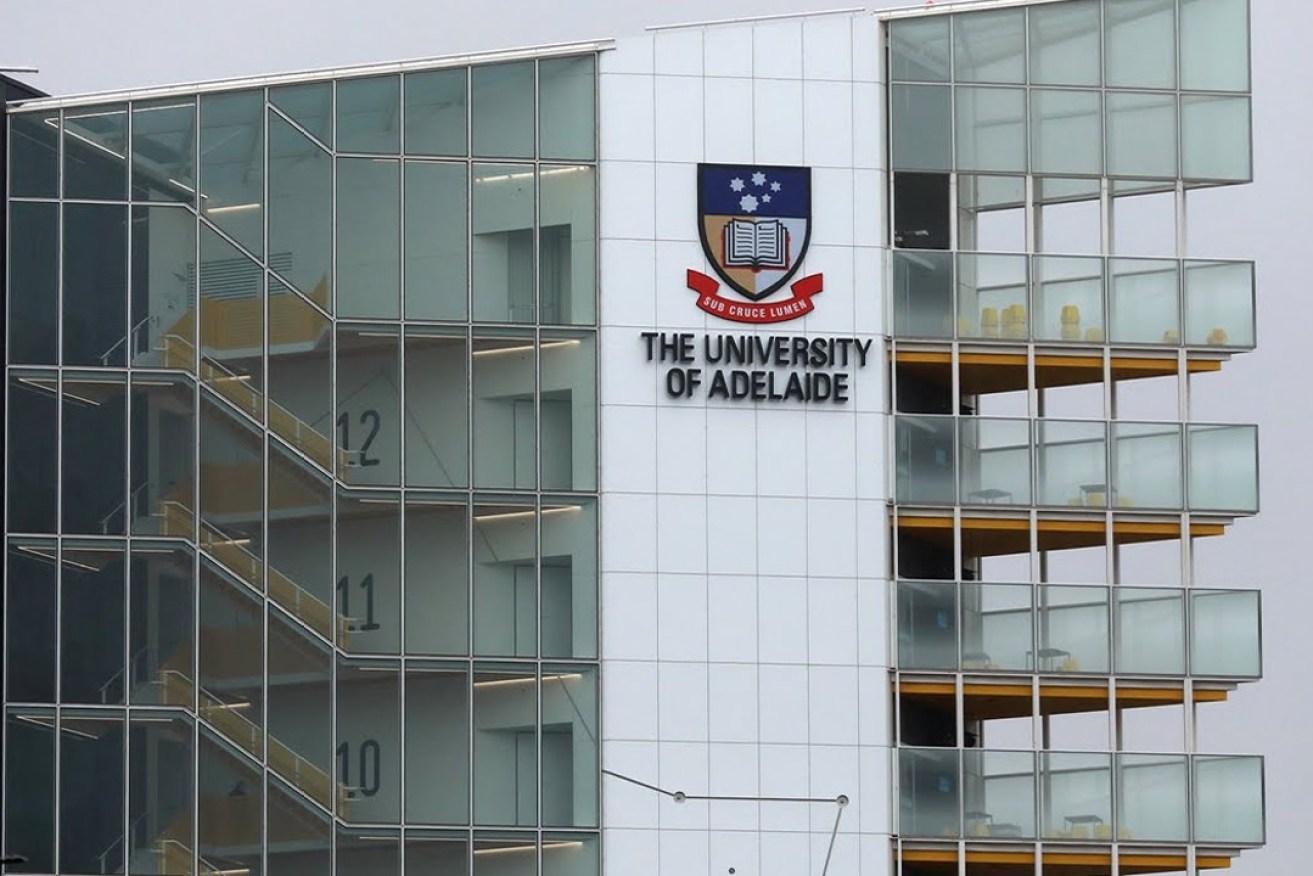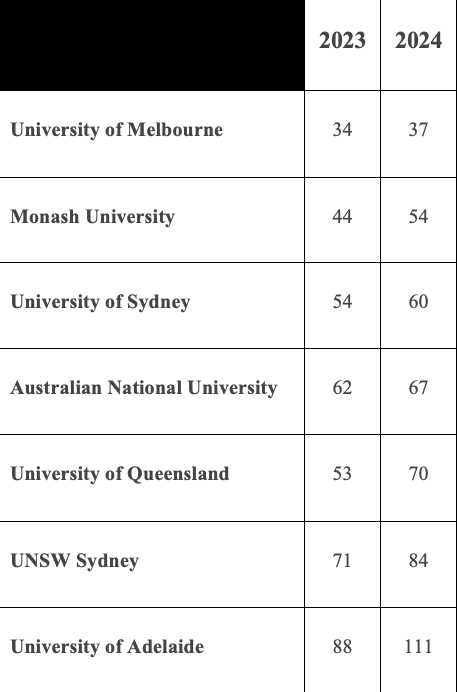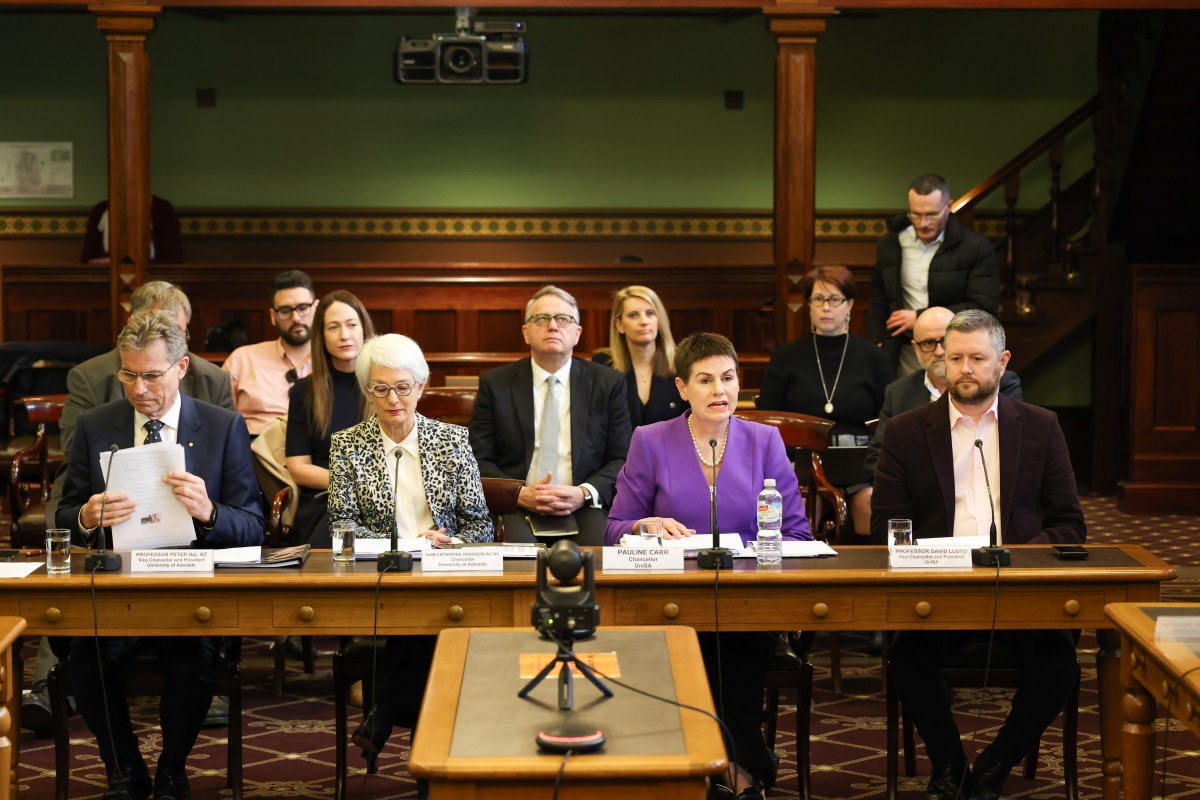University of Adelaide drops out of top 100 on global index
The University of Adelaide has recorded the biggest rankings slump among Australia’s top universities on a global index.


The University of Adelaide. Photo: Tony Lewis/InDaily
The 2024 Times Higher Education World University Rankings released today show the University of Adelaide dropping from 88th position to 111th.
The 23-place drop was the largest slump of Australia’s top 10 globally ranked universities, all of which fell in this year’s Times rankings.
The University of South Australia and Flinders University retained their place in the 301-350 rankings band. The index does not provide specific positions for universities ranked beyond 200.
A spokesperson for the University of Adelaide pointed to changes in the way the Times ranking is calculated as the reason for the decline.
“The change in the University of Adelaide’s ranking is driven by the change in methodology,” the spokesperson said.
“A combination of the reduction in value of Australian reputation votes and lowering the weighting applied to citations are the main contributors.
“The underlying performance of the University remains strong and the University has improved on many of the existing metrics.
“Like many Australian universities, the University of Adelaide is facing increasing competition from overseas. Despite an increasingly competitive global tertiary sector the University remains well placed to meet the challenges of the future.”
Times Higher Education attributed the slump recorded across Australia’s top universities to COVID-induced redundancies, “underinvestment” in research and higher student-staff ratios.

The position of Australia’s top 10 universities in 2023 and 2024, according to the Times Higher Education Ranking.
Times chief global affairs officer Phil Baty, the architect of the rankings, said while Australia continues to boast many of the world’s best universities, the latest data held “serious warning signs”.
“While Australia is one of the world’s leading university sectors for attracting international talent and collaboration, the relative isolation of the country during the pandemic is showing up in the data, to detrimental effect on universities’ ranking positions,” Baty said.
“Real attention is needed to ensure Australia continues to be open to international talent, which includes the right policy incentives as competition for international talent heats up with possible shifts in the market.”
The University of Adelaide’s Times rankings drop means it is now outside the top 100 on two of the three key global higher education rankings.
The 2023 Academic Ranking of World Universities released in August puts the University of Adelaide in the 151-200 band, down from 101-150 the year before.
However, Adelaide moved up into the top 100 of the Quacquarelli Symonds (QS) World University Rankings earlier this year, recording a 20-position rise from 109 to 89.
The University of Adelaide spokesperson also pointed to other indices in which the university is ranked in the top 100, such as the US News Best Global Universities Rankings and the UNSW Agrgreagate Ranking of Top Universities.
Proponents of the proposed merger between the University of Adelaide and UniSA have consistently argued that amalgamating the two institutions is the only way a South Australian university can be sustainably ranked in the top 100.
University of Adelaide vice-chancellor Peter Høj told a staff merger forum in July that if the two universities merged now, the new institution would be “very very close to being in the top 100 already”
He predicted the new institution – to be named Adelaide University and scheduled to open in 2026, pending parliament’s support – would be ranked around 110th on the Times Higher and QS immediately after amalgamation.
“So, if we prepare ourselves really well for 2026, if we are not already at least on one of the key rankings in the top 100, it will not take long for us to get there,” Høj said.
“And we will be on a trajectory, in my view, that will propel us much deeper into the top 100.”
UniSA vice-chancellor David Lloyd in August told the parliamentary inquiry into the university merger that achieving a higher ranking was one of the reasons UniSA agreed to amalgamation.
“We have modelling which indicates quite clearly that the future university will be ranked in the top 100,” Lloyd told MPs.
“UniSA sits well outside the top 200 of any of those rankings right now.
“If we spent all the money that UniSA has in the bank right now in pursuing that goal, we wouldn’t be sustainably positioned in there.
“So one of the outcomes from a UniSA perspective is an institution with the same mission at a much higher ranked level.”
Lloyd and Høj are both due to make a second appearance before the inquiry next week.
The University of Adelaide spokesperson said they envision the newly merged university to “consistently rank in the top one per cent of universities worldwide”.
“While the drivers behind university rankings are complex, and there are no simple prediction measures for future performance, the new university will work to ensure the best possible position in research, teaching quality, student experience and reputation – and will aim to be among the highest ranked institutions in Australia as a leading global university, irrespective of increasing competition,” the spokesperson said.

(L-R) University of Adelaide vice-chancellor Peter Høj and chancellor Catherine Branson with UniSA chancellor Pauline Carr and vice-chancellor David Lloyd at the university merger committee inquiry in August. Photo: Tony Lewis/Indaily
Deputy Premier Susan Close, who has ministerial responsibility for higher education, said the University of Adelaide’s drop in ranking “highlights the difficulty in maintaining a top 100 position as a medium sized university”.
“The drop in the University of Adelaide’s rankings demonstrates the need for us to continue to focus on a sustainably-positioned top 100 university in South Australia, as these universities continually attract more research and international students – all the things that South Australia needs to educate more local young people and ensure the economic and social health of our state,” Close said.
“While rankings are often volatile, in Australia larger institutions have the advantage of more research capacity and a wider reach for students which is more likely to stabilise their position in the rankings.”
The 2024 Times Higher Education Rankings graded 1904 universities from 108 countries according to five key pillars: teaching, research quality, research environment, international outlook and industry.
The University of Melbourne remained Australia’s only top 50 university on the index at 37th.
Monash University lost 10 places to come in at 54th, while the University of Sydney was Australia’s third highest, ranking 60th after falling six places from joint 54th last year.
The only other Australian universities to appear in the global top 100 were the Australian National University which fell five places to 67th, the University of Queensland which dropped to 70th from 53rd, and UNSW Sydney which eased from joint 71st to 84th.
Asia showed the biggest improvement with 33 of the region’s universities ranking in the top 200 for the first time, of which 13 were from China and five from Japan.
The highest ranked universities were the UK’s University of Oxford, followed by Stanford University and the Massachusetts Institute of Technology, both in the US.
-with AAP
[solstice_jwplayer mediaid=”YozMGjgM” playerid=”Meorb6nj” caption=”Sponsored video: The Post” /]




